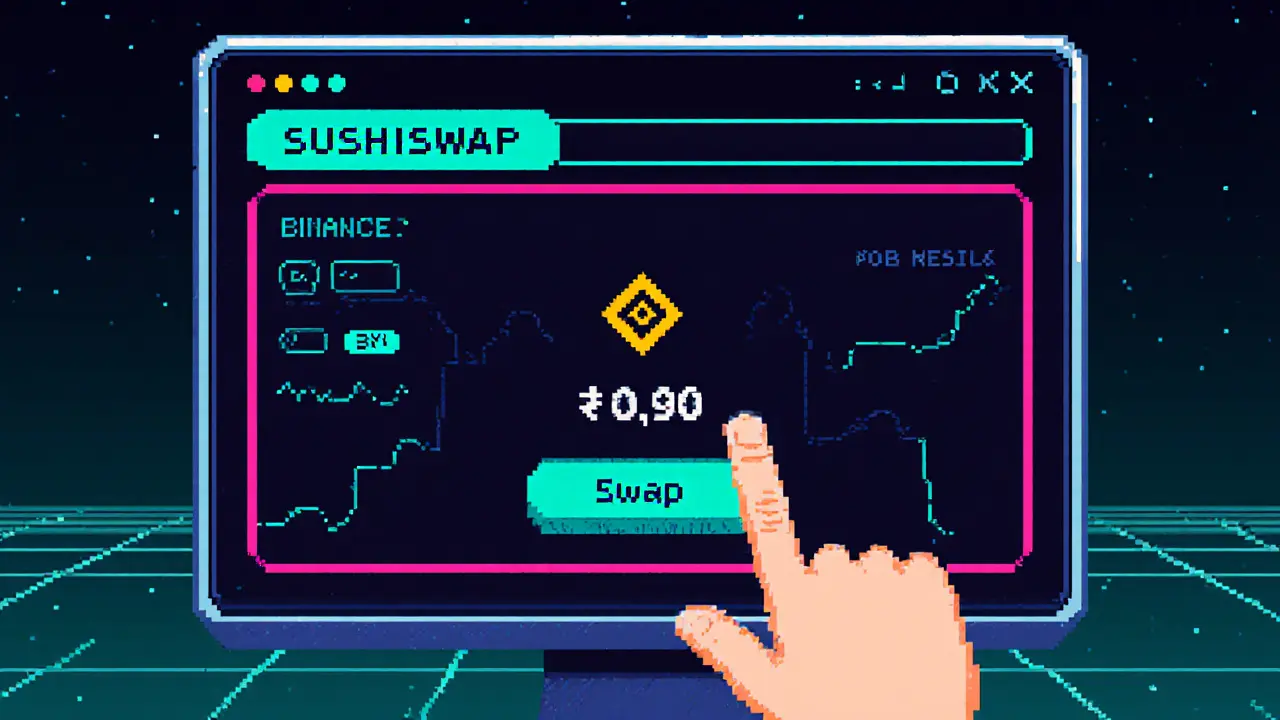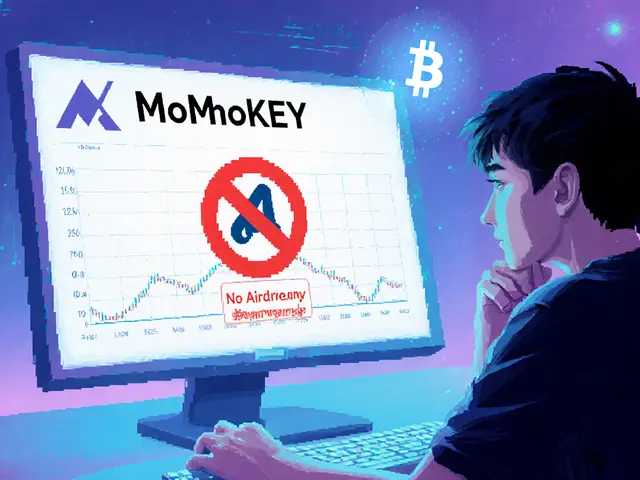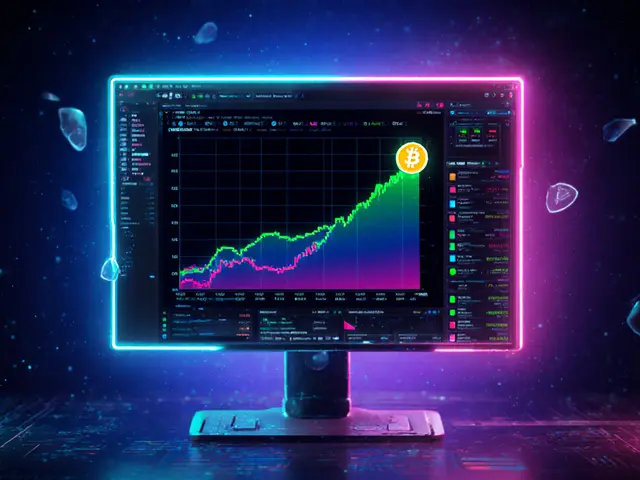Crypto Exchange Risk Assessment Tool
Risk Assessment Quiz
Answer these questions about the exchange you're considering to determine potential scam risk.
Risk Assessment Results
Key Red Flags Identified
Recommended Actions
When you hear a new crypto futures platform claim "more than 7 years of secure operation," you probably wonder if it’s a hidden gem or just another rug pull. HyperPay Futures markets itself as a derivatives exchange with deep liquidity and cutting‑edge tech, but the facts tell a very different story. This review breaks down what the service actually offers, how it measures up against real players, and which red flags should make you think twice before depositing a single satoshi.
What is HyperPay Futures?
HyperPay Futures is a cryptocurrency derivatives platform that says it lets users trade futures contracts on a range of digital assets. HyperPay is linked to a wallet service launched in 2014 in Saudi Arabia, but the exchange side remains opaque.
The platform appears on CoinMarketCap as an “Untracked Listing,” meaning its trading volume isn’t verified. In the crypto world, untracked status usually signals insufficient transparency or even possible fraud. While the website lists integrations with Bitcoin, Ethereum, Solana, and Polygon, none of those claims come with publicly visible order‑book data or API documentation.
How HyperPay Futures Stacks Up Against Major Exchanges
To see where HyperPay really stands, let’s compare it with three well‑known futures venues that publish full metrics.
| Exchange | Daily Volume (USD) | Max Leverage | Verification Status |
|---|---|---|---|
| Binance Futures the biggest futures market, processing $15‑20 billion daily | $17.3 billion | Up to 125× | Verified (CryptoCompare, CoinMarketCap) |
| Bybit a Tier‑1 exchange with $1.2 billion daily volume | $1.2 billion | Up to 100× | Verified |
| OKX Futures offers $3.8 billion daily volume and transparent funding rates | $3.8 billion | Up to 125× | Verified |
| HyperPay Futures claims multi‑crypto futures but provides no public volume data | Untracked / N/A | Not disclosed | Untracked (CoinMarketCap) |
Numbers speak loudly. Binance, Bybit, and OKX publish real‑time metrics that you can audit. HyperPay’s silence on volume, leverage limits, and order‑book depth makes it impossible to gauge risk or profitability.
Red Flags and Scam Indicators
Several independent sources have flagged HyperPay as suspicious. Cryptolegal.uk maintains a database of reported crypto scams and lists HyperPay among fraudulent investment companies. The site specifically warns against sending any funds to the platform.
On Trustpilot a consumer review site where HyperPay Futures holds a 2.3/5 rating based on 19 verified reviews, the most common complaints revolve around withdrawal delays, aggressive KYC requests, and phantom liquidity that disappears mid‑trade.
Reddit’s r/CryptoScams thread dated October 19 2025 collected 27 users reporting a total of $387,000 locked in the exchange. The top comment, from a user with 1,245 karma, summed it up: “They let small withdrawals go through, then freeze anything bigger with vague compliance excuses.”
Even the platform’s own URLs raise eyebrows. The exchange operates through subdomains like h5.trade56535.xyz, which several scam watchdogs have catalogued as “associated with exit scams.”
User Experience: Withdrawals, KYC, and Support
Legitimate exchanges aim for a frictionless onboarding process - think a few minutes for basic verification. HyperPay, however, demands notarized proof of address and video verification for withdrawals over $1,000. That level of scrutiny far exceeds standard regulatory requirements and often stalls the withdrawal pipeline for days, if not weeks.
Customer support is limited to a Telegram channel with an average response time of 72 hours. Compare that to Binance’s live chat that typically replies within an hour. When you’re trying to pull money out of a volatile market, a three‑day delay can wipe out your entire position.
Interface design is another pain point. The exchange UI mirrors the wallet’s “h5.trade” layout, which feels clunky and inconsistent across devices. New users report that order entries sometimes disappear after confirmation, a symptom often seen in platforms that fabricate order‑book depth to lure traders.
Regulatory and Security Overview
Regulation is the safety net that separates reputable exchanges from rogue operations. Coinbase Derivatives Exchange holds a CFTC designation and publishes monthly transparency reports - a gold standard for compliance.
HyperPay shows no public licensing from any jurisdiction. Its alleged base in Saudi Arabia does not help; the Saudi Central Bank (SAMA) has only licensed two crypto firms as of October 2025, and HyperPay is not among them.
Security claims are vague. The site says it follows “highest industry standards” but provides no audit reports from firms like CertiK or PeckShield, no proof‑of‑reserves, and no cold‑storage percentages. In contrast, Binance publishes regular security attestations, and OKX shares detailed cold‑wallet holdings.
Even blockchain analytics firm Chainalysis tracks crypto scams and listed HyperPay in its 2025 Crypto Scams Report as exhibiting pump‑and‑abandon patterns.
Bottom Line: Is HyperPay Futures Worth Your Money?
After digging through volume data, user reviews, regulatory filings, and independent scam databases, the picture is clear: HyperPay Futures lacks the transparency, liquidity, and compliance that serious traders demand. The platform’s biggest selling point - a claim of “7 years of secure operation” - is contradicted by its untracked status on CoinMarketCap and multiple fraud warnings.
If you’re looking for a place to trade crypto futures, stick with exchanges that publish real‑time metrics, have verifiable licenses, and provide audited security reports. Binance Futures, Bybit, OKX, and Coinbase Derivatives all meet those criteria. HyperPay Futures, on the other hand, should be classified as a high‑risk venue best avoided until it can prove legitimacy through third‑party audits and regulatory approval.
In short, treat HyperPay Futures like any other red‑flagged crypto platform: keep your distance, and don’t risk any funds you can’t afford to lose.
Frequently Asked Questions
Is HyperPay Futures a regulated exchange?
No. The platform does not disclose any licensing from financial authorities, and it is not listed among regulated exchanges in Saudi Arabia, the US, or the EU.
Why does CoinMarketCap label HyperPay as “untracked”?
“Untracked” means CoinMarketCap cannot verify the exchange’s trading volume or order‑book data, a status usually applied to platforms with insufficient transparency.
Can I withdraw funds from HyperPay Futures?
Withdrawals are possible but often delayed. Many users report freezes on amounts above $1,000, and some have lost access to their entire balance.
How does HyperPay’s leverage compare to other exchanges?
HyperPay does not publicly disclose leverage limits, whereas major exchanges like Binance and OKX offer up to 125× on major pairs.
Are there any legitimate use cases for HyperPay Futures?
Given the lack of verified data, security audits, and regulatory oversight, most traders consider it too risky for any meaningful trading strategy.









Jenna Em
October 21, 2025 AT 09:19Ever wonder why some platforms brag about “7 years of secure operation” while no one can actually see any data? It feels like they’re hiding behind a veil of mystery, like a magician with no tricks to show. In the crypto world the lack of transparency is often a red flag, not a badge of honor. If you can’t verify volume or order‑book depth, you’re basically betting on a story, not a market. So keep your eyes open and your wallet closed.